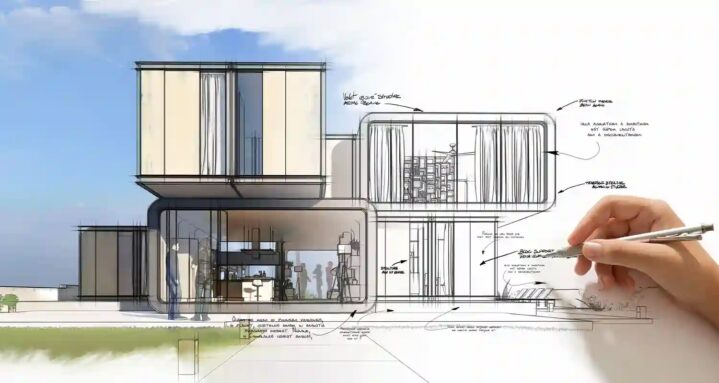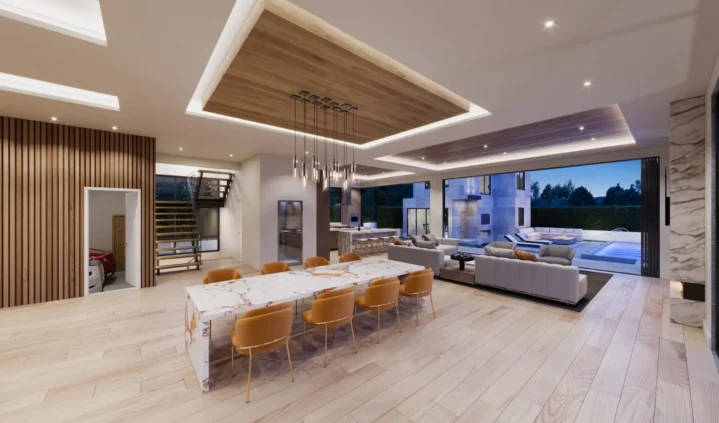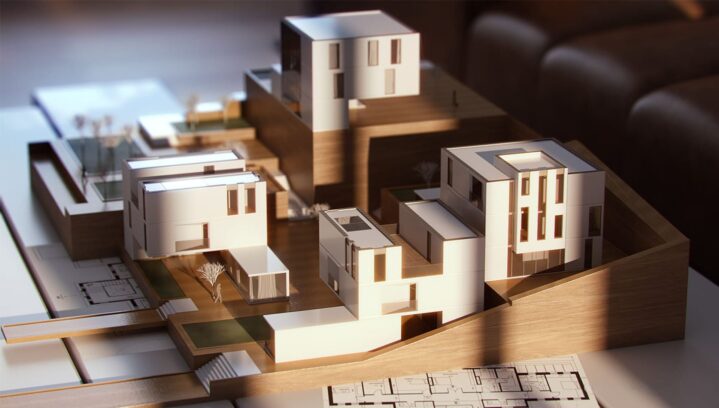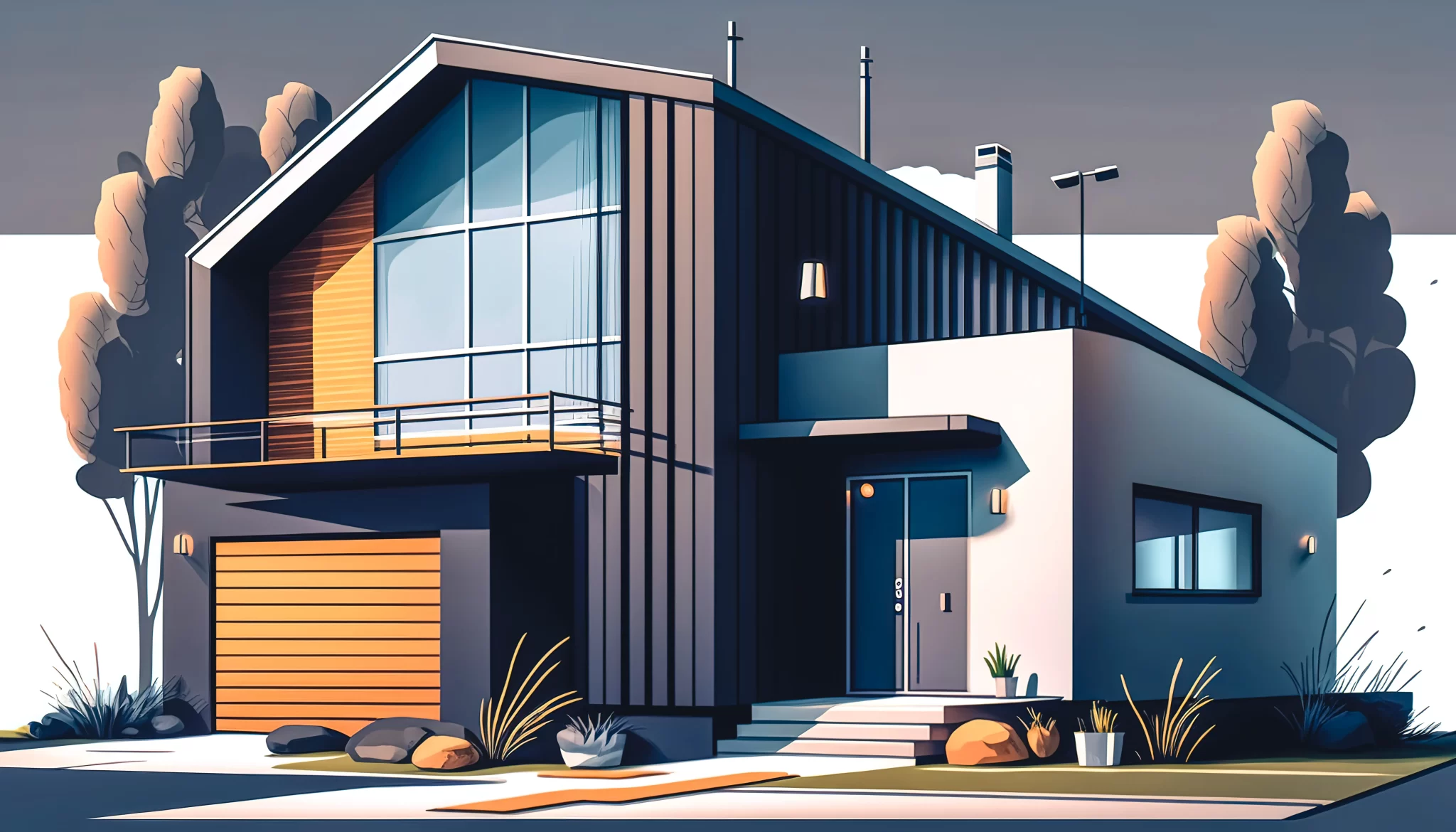Time is the ultimate currency in today’s hyper-competitive development landscape. While your competition drowns in revision cycles and approval delays, smart project managers have discovered a secret weapon that cuts months off delivery schedules: professional 3D render services. But here’s what most people get wrong – they think rendering is just about pretty pictures. Dead wrong.
The real game-changer? Strategic visualization that eliminates the bottlenecks strangling your project timeline. From pre-construction planning to stakeholder buy-in, the right rendering approach doesn’t just speed things up – it fundamentally transforms how projects move from concept to completion.
As innovation legend Steve Jobs observed, “Innovation distinguishes between a leader and a follower.” In project management, that innovation often comes down to visual communication that accelerates decision-making and eliminates costly delays.
1. Front-Load Design Decisions to Prevent Late-Stage Changes

Traditional project workflows push critical design decisions toward construction phases, creating expensive bottlenecks when changes become necessary. Smart teams use early-stage rendering to surface potential issues while they’re still cheap to fix.
High-quality renderings reveal design problems that blueprints miss – lighting conflicts, spatial flow issues, material incompatibilities, and aesthetic concerns that derail projects months later. By addressing these challenges during initial design phases, teams avoid the expensive change orders that typically blow up both budgets and schedules.
Consider a residential development where rendering reveals that proposed unit layouts create privacy issues between neighbors. Catching this during design costs thousands and takes days to resolve. Discovering it during construction costs tens of thousands and delays occupancy by weeks.
Timeline acceleration techniques:
- Create multiple design scenarios simultaneously for faster comparison
- Use rendering to test material and color combinations before ordering
- Identify potential code compliance issues before permit submission
- Surface client concerns early when changes are still economical
2. Streamline Stakeholder Approval Processes

Nothing kills project momentum like stakeholder approval bottlenecks. Traditional presentations rely on technical drawings that require interpretation, leading to misunderstandings, multiple review cycles, and delayed decisions.
Photorealistic renderings eliminate interpretation barriers by showing stakeholders exactly what they’re approving. Planning commissioners see how buildings integrate with neighborhoods. Investors understand project scope and quality. Homeowners feel confident about their investment decisions.
This clarity accelerates approval cycles dramatically. Instead of three or four review rounds while stakeholders try to visualize outcomes, decisions happen in single presentations. The psychological impact of seeing finished results builds confidence and urgency around approval decisions.
Key acceleration benefits:
- Reduced review cycles from multiple rounds to single presentations
- Faster municipal approval through clear visual communication
- Quicker investor decisions based on realistic project visualization
- Improved client confidence leading to faster contract execution
3. Optimize Pre-Sales and Marketing Launch Timing
Traditional development projects wait until near completion to launch serious marketing efforts. Forward-thinking developers use high-quality renderings to start pre-sales campaigns months or years before groundbreaking, fundamentally changing project economics and timelines.
Early pre-sales generate cash flow that accelerates construction schedules while reducing financing costs. Buyers commit to future delivery based on rendered presentations, creating predictable revenue streams that support faster project execution.
Full article visualization also enables marketing material creation well in advance of completion. Sales centers, websites, and promotional campaigns launch immediately after permit approval rather than waiting for physical progress.
Pre-sales acceleration strategies:
- Launch marketing campaigns during permitting phase
- Generate early cash flow to accelerate construction funding
- Create marketing materials that don’t require completed construction
- Build buyer excitement and urgency through compelling visualization
4. Enable Parallel Workflow Development
Traditional project workflows are sequential – design, then approve, then build. Rendering enables parallel workflows where multiple project phases advance simultaneously, dramatically compressing overall timelines.
While architects finalize design details, marketing teams create promotional materials using early renderings. While permits process through municipal departments, contractors begin material sourcing based on rendered specifications. While financing finalizes, pre-sales efforts generate early revenue based on visualization.
This parallel approach requires coordination but can reduce overall project timelines by 20-40% compared to sequential workflows. Teams work simultaneously rather than waiting for preceding phases to complete.
Parallel workflow opportunities:
- Marketing development during design finalization
- Material sourcing during permitting processes
- Pre-sales campaigns during financing negotiations
- Contractor selection using rendered project specifications
5. Accelerate Material Selection and Procurement
Material selection traditionally happens through sample boards, physical mockups, and lengthy client consultation processes. Rendering accelerates these decisions by showing materials in realistic contexts, complete with proper lighting and environmental conditions.
Clients see how granite countertops look with specific cabinet finishes and lighting conditions rather than imagining combinations from individual samples. Architects compare roofing materials in actual weather and lighting conditions rather than estimating appearances from small specimens.
This realistic visualization speeds material decisions while improving selection quality. Clients feel confident about choices made through rendered presentations, reducing change requests during construction when material modifications become expensive and time-consuming.
Material selection benefits:
- Faster client decisions through realistic material visualization
- Reduced change orders during construction phases
- Better material coordination between project elements
- Improved client satisfaction with final material choices
6. Compress Design Iteration Cycles

Traditional design iteration requires physical drawings, printed materials, and in-person presentations. Digital rendering accelerates iteration cycles by enabling rapid design modifications and instant visual feedback.
Architects modify designs and generate updated renderings within hours rather than days. Clients review changes remotely without scheduling additional meetings. Teams explore multiple design directions simultaneously rather than pursuing single approaches sequentially.
This acceleration is particularly valuable during early design phases when iteration frequency determines final design quality. Teams that iterate quickly produce better solutions while maintaining compressed timelines.
Iteration acceleration methods:
- Real-time design modifications with immediate visual feedback
- Remote client review eliminating meeting scheduling delays
- Simultaneous exploration of multiple design alternatives
- Rapid testing of “what-if” scenarios without time penalties
7. Eliminate Physical Mockup Requirements
Physical mockups and model construction traditionally consume weeks of project timeline while requiring significant labor and material investments. High-quality rendering eliminates most physical mockup requirements while providing superior visualization capabilities.
Virtual mockups show designs from unlimited angles, in various lighting conditions, and with different material combinations. Modifications happen instantly rather than requiring reconstruction. Storage and transportation constraints disappear entirely.
For complex projects, virtual mockups save months of preparation time while enabling more comprehensive design exploration than physical alternatives allow.
Virtual mockup advantages:
- Instant modifications without reconstruction time
- Unlimited viewing angles and lighting conditions
- Zero storage and transportation requirements
- Cost savings that accelerate other project elements
8. Accelerate Contractor and Vendor Selection
Contractors and vendors make better proposals when they clearly understand project requirements and quality expectations. Detailed renderings communicate these expectations more effectively than technical drawings alone.
Accurate proposals reduce negotiation cycles and prevent change orders based on misunderstood requirements. Contractors price projects more precisely when they understand exact material specifications, finish details, and spatial relationships.
This clarity accelerates the bidding process while improving proposal quality. Projects move faster from design completion to construction start when contractor selection happens efficiently.
Vendor selection benefits:
- More accurate initial proposals reducing negotiation time
- Better contractor understanding of quality expectations
- Reduced change orders based on misunderstood requirements
- Faster transition from design to construction phases
9. Enable Remote Collaboration and Decision-Making
Global teams and remote stakeholders can slow project timelines when coordination requires extensive travel and in-person meetings. High-quality renderings enable effective remote collaboration by providing shared visual references for discussions and decisions.
International projects particularly benefit from rendered visualization that transcends language barriers and cultural differences. Technical drawings require professional interpretation, but realistic renderings communicate clearly across disciplines and cultures.
Remote decision-making accelerates project timelines by eliminating travel requirements and scheduling constraints that traditionally delay critical approvals and modifications.
Remote collaboration advantages:
- Eliminated travel time for stakeholder reviews
- Clear communication across language and cultural barriers
- Faster decision-making without scheduling constraints
- Improved coordination between distributed team members
10. Create Documentation That Prevents Construction Delays
Construction delays often result from unclear documentation that leads to field questions, rework, and change orders. Comprehensive rendering packages provide visual documentation that supplements traditional construction drawings.
Contractors understand complex details more easily when they see realistic visual representations alongside technical specifications. Subcontractors coordinate better when they understand how their work integrates with other project elements.
This improved understanding reduces field questions and prevents installation mistakes that require time-consuming corrections. Construction proceeds more smoothly when everyone understands intended outcomes clearly.
Documentation benefits:
- Reduced field questions and clarification requests
- Better subcontractor coordination and understanding
- Fewer installation mistakes requiring correction
- Smoother construction workflow with fewer interruptions
The Compound Effect of Timeline Acceleration
Individual rendering benefits create compound acceleration effects when combined strategically. Projects that eliminate approval delays, streamline material selection, enable parallel workflows, and prevent construction rework can compress timelines by 30-50% compared to traditional approaches.
This acceleration provides competitive advantages beyond simple time savings. Faster project completion means earlier revenue generation, reduced carrying costs, and quicker capital recycling for new projects. Teams that master timeline acceleration through strategic rendering gain sustainable competitive advantages in increasingly time-sensitive markets.
The key insight? Rendering isn’t just a visualization tool – it’s a project acceleration strategy that smart teams use to dominate their markets through superior execution speed. While competitors struggle with traditional workflows, rendering-powered teams deliver projects faster, cheaper, and with higher stakeholder satisfaction.
The question isn’t whether you can afford professional rendering services. The question is whether you can afford the delays, cost overruns, and missed opportunities that come from managing projects without them.
Time waits for no one, but rendering gives you the power to make every moment count toward project success.
